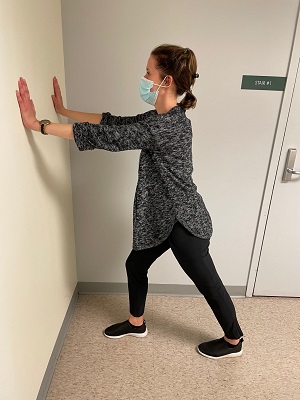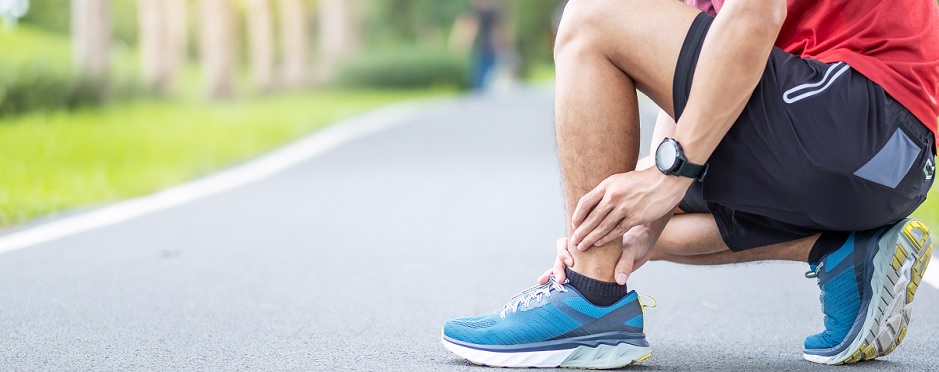
4 Tips to Prevent Achilles Pain or Injury
Leave a CommentAchilles pain or injury can prevent itself in the form of tendinopathy (i.e. tendinitis or tendinosis), or the more critical Achilles tendon tear or rupture. The Achilles tendon is the tendon to the gastroc and soleus, which together are known as the calf muscles. The role of a tendon is to transfer the force from the contracting muscle to the intended joint of movement. Together these muscles plantarflex the ankle joint, or point the foot downwards. This action creates the force needed to push the ground away and help propel the body forwards (or upwards) when we are walking, running, or jumping. The Achilles tendon is the strongest tendon in the body, and the gastroc and soleus are the primary ankle plantar flexor muscles.
While injuries are not entirely preventable, here are some tips to decrease your chance of Achilles injury.
1. Strengthen your calves
Weakness of the ankle plantar flexors has been shown to be a risk factor for Achilles injuries.1 Improving your calf strength will increase the power of your stride or jump take-off, and will help reduce the impact when your foot returns to the ground. You can strengthen your calves by performing heel raises.
Start standing on both feet, and then rise up onto the balls of your feet, lifting the heels from the ground. See how many you can perform standing on both legs. If you can perform a minimum of 20 repetitions without pain or difficulty, you may progress to a single leg heel rise. A good target for anyone who participates in athletic activities that involve running, cutting, or jumping is to be able to perform 25 heel rises on one leg consecutively. Work up to this goal gradually, and focus on controlling the rise and lower of the ankle and foot, keeping equal pressure between the big toe and fifth toe sides of the ball of the foot.
2. Improve your ankle flexibility
Upon landing from a jump, the ankle needs to dorsiflex, meaning the shin moves closer to the foot. If there is not enough flexibility of the gastroc and soleus, ankle dorsiflexion will be limited and it can put increased strain on the Achilles tendon.2 Take time to perform static stretches of the calf muscle after your activity. One way to stretch these muscles is by standing in a lunge with your front knee bent and back leg extended, with both toes pointing forwards. Hold this position for 20-30 seconds, and perform 2-3 repetitions, aiming for 60 seconds of stretching total on each leg.
3. Dress for the elements and warm-up properly
Training during cold weather may be a contributing factor to Achilles pain or injury.1 The physiologic basis for this is that tendons and other soft tissues in the body are stiffer, or less elastic in cold temperatures compared to warmer temperatures. When your calf muscles contract, it places a tensile load on the Achilles tendon. If that tendon is stiffer, it won’t be as readily elastic and adaptable and can subsequently experience micro-tears or even complete rupture under workload. If you are headed outdoors for your run or practice, make sure to dress appropriately for the temperature. Also, perform a warm-up for at least two minutes with less intensive movements. Examples of good warm-up activities are brisk walking or a lower-impact cardio activity such as stationary biking, if your workout will be high impact. Alternatively you can do dynamic stretches. Here are a few that are easy to perform wherever your workout takes place.
Ankle Rockers
Start holding onto a wall, tree, or fence. Set your feet up so they are in the calf stretch position as pictured above, but you want your front foot to only be a few inches from the wall. Bend your knees to bring your front knee as close to the wall as you can without the heel lifting up from the ground. Straighten your knee to return to start position. Repeat. Perform 1-2 sets of 10-15 on each ankle.
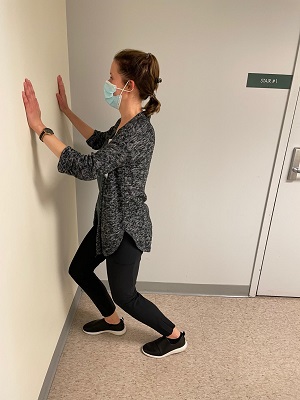
High Knees
Start standing upright on both feet. March one knee up as high as you can towards your hands, then lower down. Repeat. Perform 8-15 reps each on right and left sides.
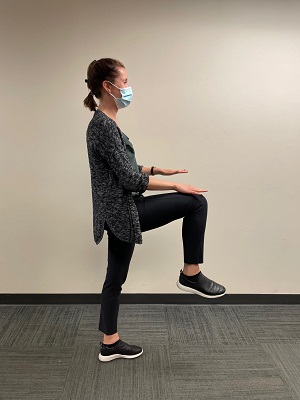
Butt Kicks
Start standing upright on both feet. Bend one knee to kick your heel towards the glutes on the same side. You will feel a stretch through the front of the thigh and hip. Bring that leg down to starting position and repeat with the other leg. Perform 8-15 reps each on right and left sides.
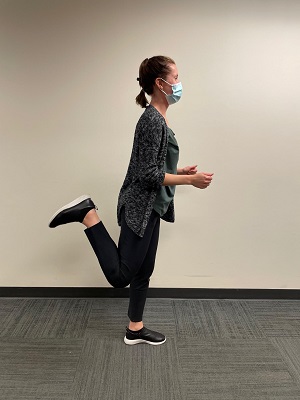
4. Address your gait mechanics
People who overpronate (when the ankle rolls too far downward and inward with each step) appear to have higher rates of Achilles injury.2 If something is at fault with your gait mechanics it can place increased stresses on the bones and tendons of the ankle and foot resulting in injury due to repetitive stress.
When In Doubt, See a Physical Therapist
If you are experiencing persistent pain in your foot or ankle that has not improved with a few weeks of rest or activity modification, it is recommended to seek further assessment by a professional. A physical therapist can observe your gait mechanics and make recommendations for steps you can take to improve your form. This could include an individualized exercise program, shoe type, taping methods, or seeking orthotics. Many Athletico therapists are also able to do a video gait assessment (VGA) of your running form to provide more detailed feedback. Get started today by scheduling a Free Assessment. Free Assessments are available in-clinic and virtually through our Telehealth platform.
The Athletico blog is an educational resource written by Athletico employees. Athletico bloggers are licensed professionals who abide by the code of ethics outlined by their respective professional associations. The content published in blog posts represents the opinion of the individual author based on their expertise and experience. The content provided in this blog is for informational purposes only, does not constitute medical advice and should not be relied on for making personal health decisions.
References:
1. van der Vlist, A. C., Breda, S. J., Oei, E., Verhaar, J., & de Vos, R. J. (2019). Clinical risk factors for Achilles tendinopathy: a systematic review. British journal of sports medicine, 53(21), 1352–1361. https://doi.org/10.1136/bjsports-2018-099991
2. Shamrock, A. G., & Varacallo, M. (2020, August). Achilles Tendon Rupture. Retrieved from https://www.ncbi.nlm.nih.gov/books/NBK430844/
